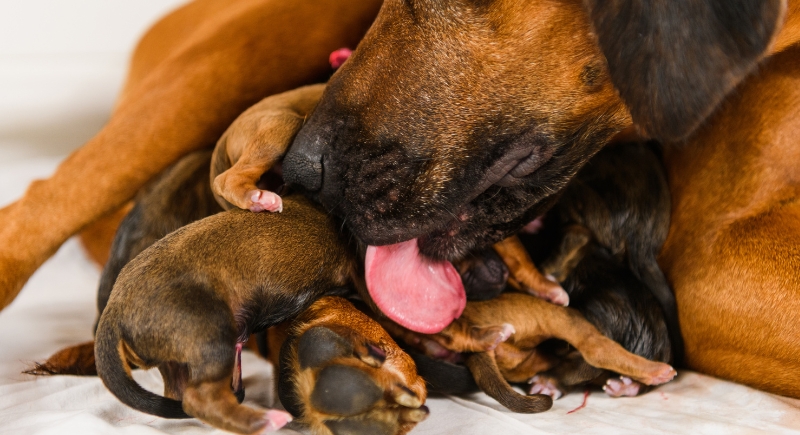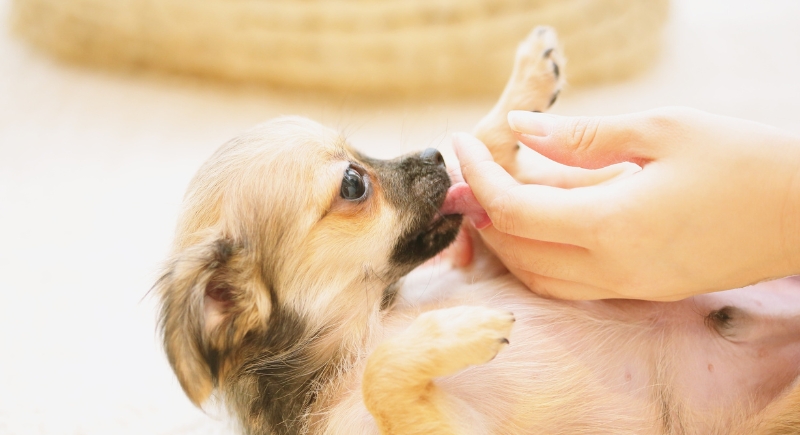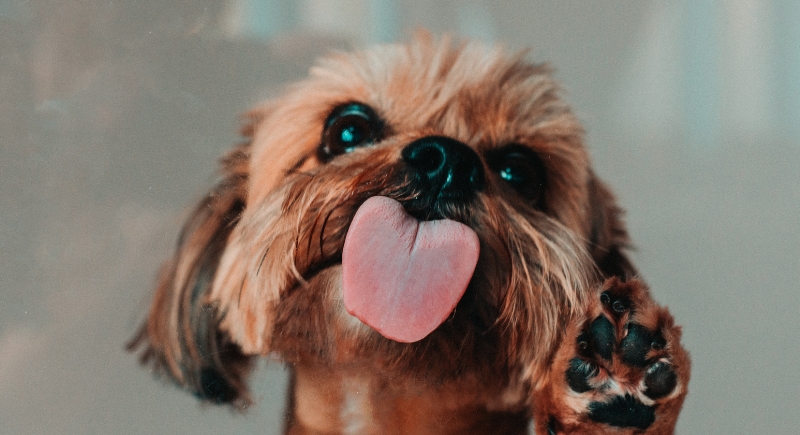The Behavioral Science Behind Why Your Dog Is Licking You
Dog owners experience countless moments with their pets: bursts of play, shared routines, and gestures that build connection. Among them, one behavior stands out as universal — the familiar lick. You walk through the door and it happens again, full of enthusiasm and intent. What seems like an everyday greeting has long intrigued scientists studying how dogs express attachment and emotion.
Dog Licking Explained

Image via Getty Images/Olga Gorovenko
Licking is one of the first behaviors dogs ever learn. Right after birth, mother dogs lick their puppies to clean them and help them breathe. Puppies quickly learn that licking gets attention and communicates safety. As adults, they carry that instinct into their relationships with humans. When your dog licks you, it’s more than affection.
Research shows that licking releases endorphins and dopamine in a dog’s brain, which helps them feel calm and secure. Dogs also use licking to connect socially, similar to how humans use touch or words. In canine communication, it’s a way to show submission or express trust toward someone they care about.
The Many Meanings Behind It
Licking can mean affection and curiosity. It can even be a polite request for food. In the wild, wolf pups lick the mouths of adult wolves when they’re hungry, and domestic dogs still have a version of that instinct. Your pup’s sense of taste isn’t as strong as yours, as they have about 1,700 taste buds compared to our 9,000, but their sense of smell makes up for it.
Dogs can taste sweet, sour, salty, and bitter, but they can’t detect umami. However, they can taste water, something humans can’t. Their extraordinary sense of smell drives most of their licking habits. It’s why they love the taste of skin after exercise or food residue on your hands.
Targeting Specific Spots

Image via Canva/Aflo Images
Each area of your body tells a different story. Your hands carry scents from everything you’ve touched, which makes them a sensory diary for your dog. Faces are also full of natural oils, salt, and food aromas. Ears produce natural secretions that, mixed with bacteria, create scents dogs find fascinating.
Feet are another popular spot due to salty sweat, while legs attract attention because of lotions, soaps, or oils left after bathing. These scents and tastes provide pooches with information about your activities and perhaps your health, too.
When the Deed Becomes Excessive
Most licking is harmless, but excessive or sudden licking can point to stress or a medical issue. Dogs may lick themselves or others to soothe anxiety or relieve pain. Sometimes, constant licking signals allergies, infections, or even joint problems. If you notice obsessive licking or changes in behavior, it’s best to check with your veterinarian or a certified animal behaviorist.
To reduce unwanted licking, keep your reaction neutral. Ignoring the behavior rather than pushing your dog away helps avoid reinforcing it. Reward calm behavior instead. Redirecting energy into play, training, or exercise is particularly effective for dogs that lick out of boredom or nervousness.
Should You Let Your Dog Lick You?

Image via Canva/Mike Jones
Letting your dog lick your face or hands is mostly a personal choice. Most of the time, it’s harmless, but their mouths are filled with bacteria. They lick all sorts of things you probably don’t want to think about. The risk of getting sick is small, but if you have an open wound or a compromised immune system, it’s best to skip the kisses. A quick wash with soap and water afterward never hurts.
In the end, licking is one of the many quirky ways dogs connect with people. Sometimes it’s a show of love, sometimes curiosity, and sometimes just a salty snack. Understanding the reason behind it helps you respond the right way… and maybe appreciate those wet, sloppy “kisses” a little more.